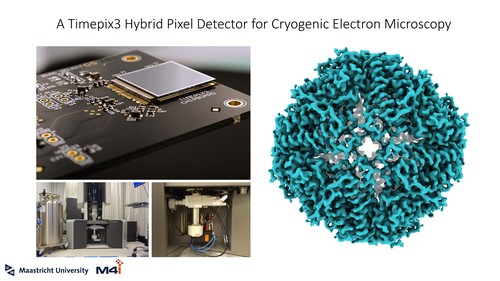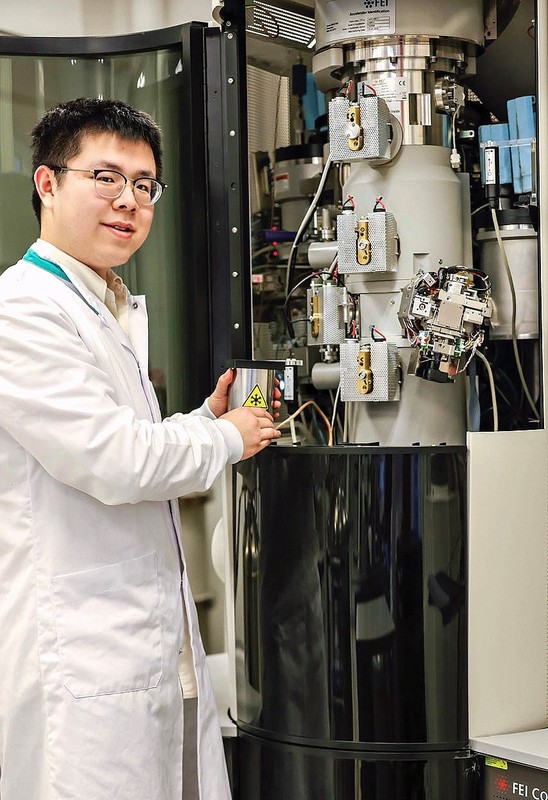【山高讲堂】Integration of an event-drivenTimepix3 hybrid pixel detector into a cryo-EM workflow
【山高讲堂】
Integration of an event-drivenTimepix3 hybrid pixel detector into a cryo-EM workflow
Date & Time: 2023.6.28 10:00AM
Location: ConferenceRoom 109, Thermal Engineering Building
Abstract:

The development of direct electron detectors has played a key role in low-dose electron microscopy imaging applications. Monolithic active-pixel sensor (MAPS) detectors are currently widely applied for cryogenic electron microscopy (cryo-EM); however, they have best performance at 300 kV, have relatively low read-out speed and only work in imaging mode. Hybrid pixel detectors (HPDs) can operate at any energy, have a higher DQE at lower voltage, have unprecedented high time resolution, and canoperate in both imaging and diffraction modes. This could make them well-suited for novel low-dose life-science applications, such as cryo-ptychography, iDPC, and liquid cell imaging. Timepix3 is not frame-based, but truly event-based, and can record individual hits with 1.56 ns time resolution. Here, we present the integration of such a detector into a cryo-EM workflow and demonstrate thatit can be used for automated data collection on biological specimens. The performance of the detector in terms of MTF and DQE has been investigated at 200 kV and we studied the effect of deterministic blur. We describe asingle-particle analysis structure of 3 Å resolution and compare it with Falcon3 data collected using the same microscope. These studies could pave theway towards more dose efficient single-particle techniques.
Lecturer:

Born on June 19, 1993, in Hubei, China, Yue Zhang spent most of his life there until he moved to Jinan in 2011 to pursue his bachelor's degree. In 2015,he graduated with a diploma in Energy and Environmental Engineering from Shandong University and subsequently moved to Delft, the Netherlands tocontinue his graduate studies at the Delft University of Technology. He completed his Master's degree in Sustainable Energy Engineering in 2017 and then began working as a researcher in the university, designing and fabricatingin-situ TEM nanochips under the supervision of Prof. Henny Zandbergen.
In 2019, Yue made his way to Maastricht to join the Nanoscopy group at the Maastricht MultiModal Molecular Imaging (M4I) Institute, supervised by Prof. Raimond B. G. Ravelli, Prof. Peter J. Peters, and Dr.Carmen López-Iglesias. During his PhD, he contributed to two projects - Q-sortand TKI/4DEM. In the Q-sort project, Yue worked alongside a team of experts to explore the use of a quantum sorter for low-dose information retrieval from biological specimens. In the 4DEM project, he played a critical role in integrating a Timepix3 Hybrid pixel detector into a 200 keV Thermo Fisher Tecnai Arctica for an automated cryo-EM workflow. He will continue to apply his expertise by building and integrating a Timepix4 Hybrid pixel detector for acryo-EM workflow. Inspired by the charging effect when using the TPX3 detector, he designed and performed an experiment to characterise the charging effect and deploy graphene to mitigate charging. Soon, Yue will continue working alongside his peers at LMB Cambridge under the supervision of Dr. Jan Löwe, he is eagerto make contribution to the world of cryo-EM.




